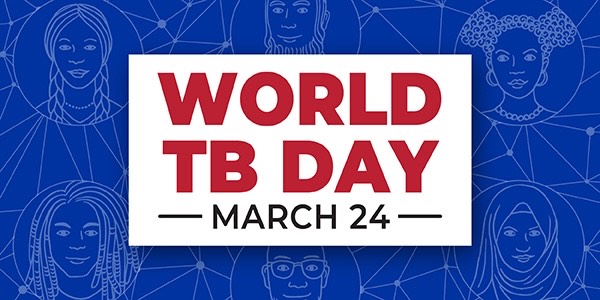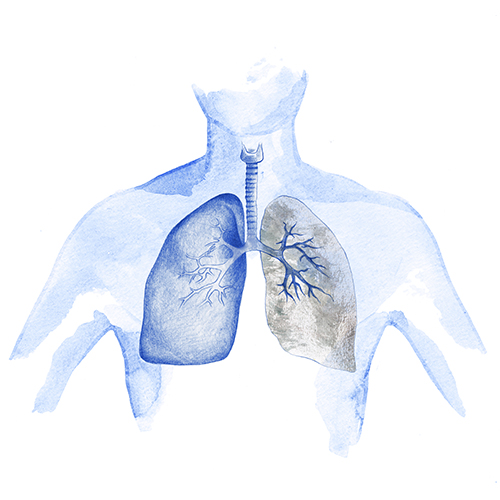On 24 March 1882, Robert Koch identified the bacillus that causes tuberculosis, Mycobacterium tuberculosis, known in his honour as Koch’s bacillus. This discovery earned Robert Koch the Nobel Prize in 1905, the finding was of great significance at the time, since one fifth of deaths were caused by tuberculosis. In commemoration of this discovery, every 24th March is marked on the calendar as World Tuberculosis Day.
A study published in Nature Genetics indicates that there is evidence that Mycobacterium tuberculosis dates from more than 70,000 years ago, M. tuberculosis has therefore always accompanied the human race, causing tuberculosis (TB). Despite advances in medicine, tuberculosis remains a health problem affecting millions of people.
The latest WHO report in 2020 indicated that there were 9.9 million cases of tuberculosis annually in the world, a quarter of the world population is infected by Mycobacterium tuberculosis, presenting latent tuberculosis, causing 1.5 million deaths in the world. The overall incidence rate is estimated to be 140 cases/100,000 inhabitants, mainly concentrated in underdeveloped countries in Asia and Africa. Tuberculosis can affect anyone anywhere, being much more prevalent and severe in patients with an affected immune system. Although in Europe and developed countries the incidence rate is low at 10 cases/100,000 inhabitants, tuberculosis infection continues and leads to deaths.

A problem that has aggravated tuberculosis is the emergence of resistance to drugs considered first line, sometimes becoming untreatable due to the lack of active antibiotics. Treatment for tuberculosis is lengthy, still lasting between 6 and 9 months at best when there is no resistance, so it is easy for patients to stop taking their medication during the course of treatment. Tuberculosis resistance to antibiotics occurs mainly when there is poor adherence to treatment, so monitoring the treatment of patients is very important.
In order to end this pandemic, in 2015 the WHO proposed the “End TB” strategy, implementing measures mainly based on the detection, monitoring and treatment of active and latent tuberculosis, especially in at-risk groups of patients (those with HIV, young children etc.) both in developed and underdeveloped countries. Tuberculosis is a reflection of the existing socio-economic inequalities in the world, affecting mainly underdeveloped countries, it is therefore essential to provide resources to the countries most in need. Tuberculosis is a curable disease when well-managed, it therefore seems paradoxical that a curable disease continues to affect and infect so many people and lead to so many deaths.
Treatment of tuberculosis is complex and requires long-term combination therapy with drugs other than those used for other infectious diseases. The first-line drugs used are still the ones used decades ago and the BCG vaccine that we have dates back more than 100 years and is only effective in children under the age of 5, with a negative tuberculin test from highly endemic countries, to prevent extrapulmonary tuberculosis.
The WHO “End TB” strategy indicates the need to develop and provide new drugs and vaccines to eradicate tuberculosis by 2050 and, to be able to do this, reduce TB to less than 1 case per million inhabitants per year.
In relation to this there are currently phase 3, recombinant vaccines and recently approved drugs such as Bedaquiline that seem promising. On February 20, promising results of a clinical trial (TRUNCATE-TB) were published in the prestigious New England Journal of Medicine, demonstrating that a 2-month regimen of combined treatment with Bedaquiline was not inferior to conventional 6-month combination treatment. If these results are confirmed, the duration of treatment could be reduced and therefore adherence to it improved and the development of resistance prevented.
Since the implementation of the “End TB” strategy proposed by the WHO, cases and deaths from tuberculosis have been reduced by 10% in underdeveloped countries and 20% in Europe. However, we are still halfway to the proposed goal, the Covid pandemic has also caused a setback in the progress achieved, both in developed and underdeveloped countries, by focusing resources and attention on COVID during the pandemic years.

World TB Day should raise awareness:
- Of tuberculosis as one of the main infectious diseases that continues to affect and kill millions of people, and that infects a quarter of the world’s population.
- That in a globalised world, resources must be provided to the countries most in need.
- About the need to monitor, diagnose and treat not only cases of active tuberculosis but also cases of latent tuberculosis. Latent tuberculosis is the precondition prior to becoming ill with tuberculosis, 10% of immunocompetent people will develop tuberculosis at some point in their lives. For immunocompromised people or children this figure is much higher. Latent tuberculosis has no symptoms, is not contagious, and is detected with a laboratory test known as IGRA or using “Mantoux.”
Dr. Marco Antonio Sempere Alcocer. PhD, MSc
Specialist in Clinical Microbiology
Laboratory Director at HC Marbella Internacional Hospital
FEA of Hospital Universitario Virgen de la Victoria
Professor at UNIR
March 24, 2024
Read other news
Tel.: +34 952 908 628
+34 609 148 799
952908898 Oncology
951829978 Diagnosis by imaging
951829947 Gynecology
952908897 Fertility
951829947 Physiotherapy